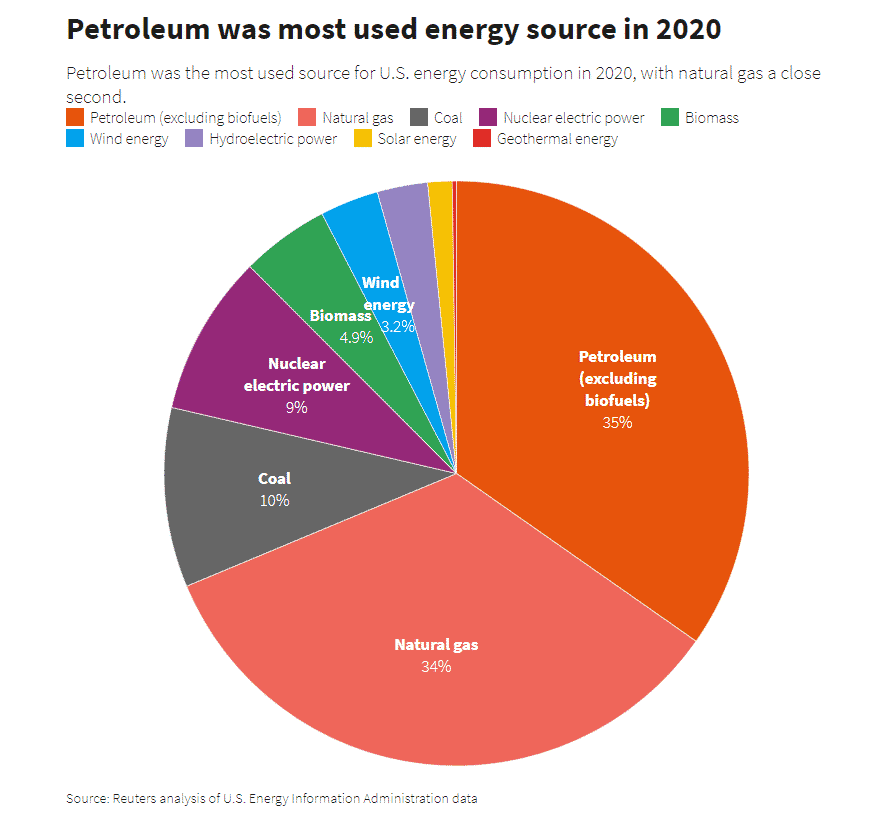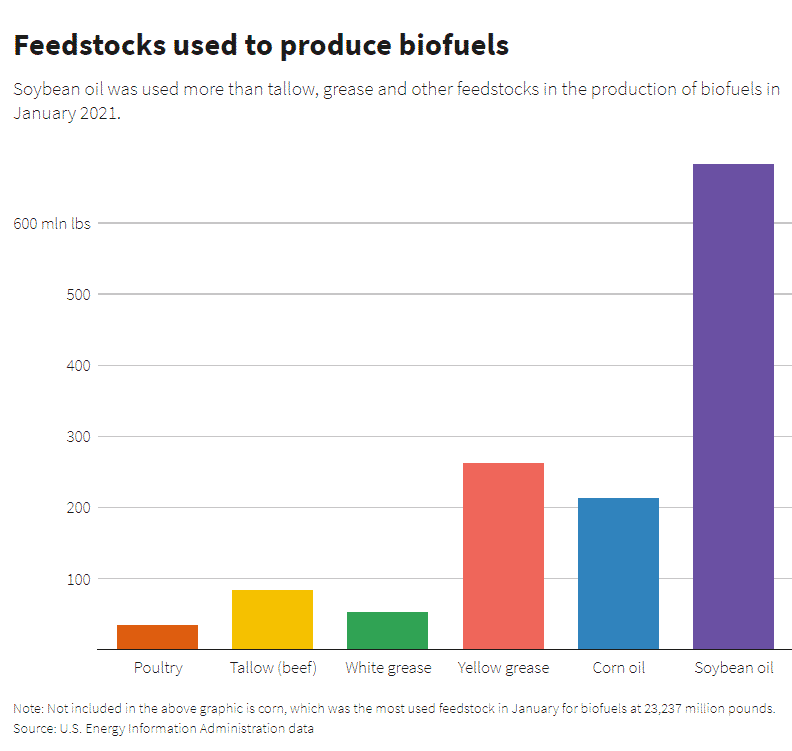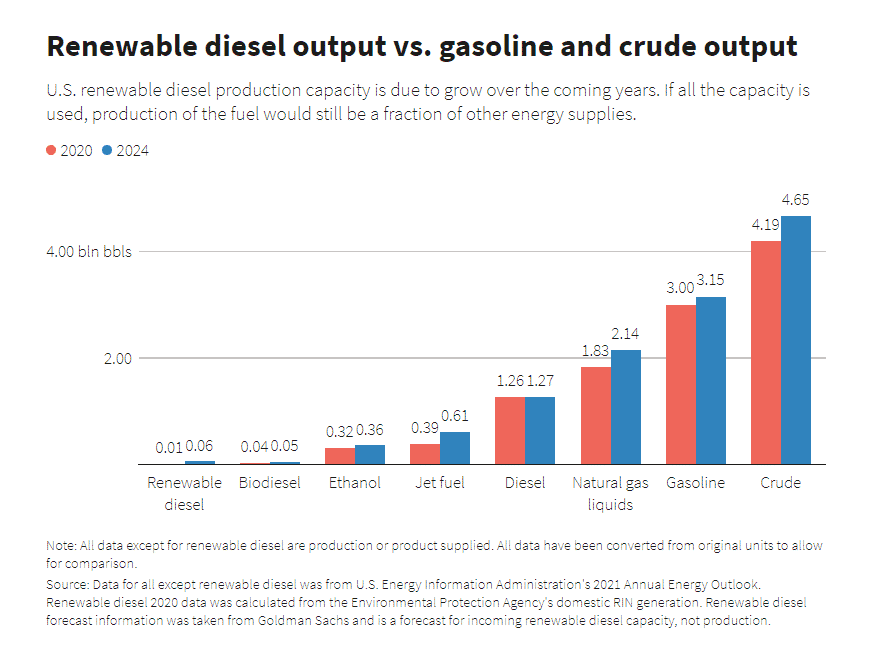U.S. renewable fuels market could face feedstock deficit
U.S. renewable fuels market could face feedstock deficit
NEW YORK (Reuters) – Demand for feedstocks from renewable fuel producers is expected to surge in the United States in coming years as companies scramble to expand output.
Energy from material that comes from plants and animals, or biomass, currently accounts for roughly 5% of U.S. energy use, slightly more than wind and solar energy. Most U.S. energy use is still based around fossil fuels like petroleum and natural gas.
The United States and other nations are attempting to reduce overall carbon emissions and cut use of high-polluting fossil fuels. Refiners, farmers and agricultural giants are hoping to gain a foothold in fuel supply through production of fuels made from biomass.
But biomass-based fuel production could face limits, as farmers need to harvest more soy and other products to meet growing demand, while companies that collect and process animal fats or spent cooking oil also would need to expand.
Fuels such as biodiesel, renewable diesel and sustainable aviation fuel draw from the same feedstock pool, and analysts have warned there might not be enough lower-carbon intensive feedstock to keep up.
GRAPHIC: Petroleum was the most used energy source in 2020

Demand for soybean oil alone is expected to far outstrip supply by 2023, according to a BMO Capital Markets report from October 2020. The financial services provider estimates an incremental demand of 8 billion pounds of soybean oil by 2023 because of an increase in renewable diesel production.
“The feedstock issue is going to be an enormous problem. Dealing with this matter is going to be hard,” said Robert Campbell, head of oil products research at Energy Aspects.
Renewable energy made up 9.11 quadrillion British thermal units, or 9.8%, of the total energy consumption in 2020, according to Energy Information Administration’s Annual Energy Outlook. By 2024, that’s expected to grow to 12.23 quadrillion Btu, or 12.5%, of total energy consumption.
RENEWABLE PRODUCTION ON THE RISE
Biomass can make fuels such as renewable diesel, biodiesel, sustainable aviation fuel and ethanol.
Renewable diesel production capacity is expected to nearly quintuple to about 2.65 billion gallons (63 million barrels) by 2024, investment bank Goldman Sachs said in October. But that would require an additional 17 billion pounds of feedstock, creating friction between existing biodiesel and food customers, the report said.
The United States produced 533 million gallons of renewable diesel in 2020, according to a Reuters analysis of Environmental Protection Agency data.
U.S. biodiesel production is roughly 110,000 barrels per day, according to the Energy Information Administration’s Annual Energy Outlook, dwarfed by oil refineries, which last year had an operable crude distillation capacity of around 19 million barrels per day, according to EIA.
GRAPHIC: Feedstock used to produce biofuels

While biodiesel requires around 7.5 pounds of feedstock per gallon, renewable diesel needs about 8.5 pounds per gallon, Goldman Sachs said. They estimate a 13-billion pound feedstock deficit by 2024 as more processing capacity starts up. Sustainable aviation fuel production will further increase demand for renewable feedstock.
Though other, lower-carbon intensive feedstocks like tallow and used cooking oil are gaining traction because of government incentives, producers still rely mostly on corn and soybeal oil to make biofuels.
GRAPHIC: Renewable diesel output vs. gasoline and crude output
